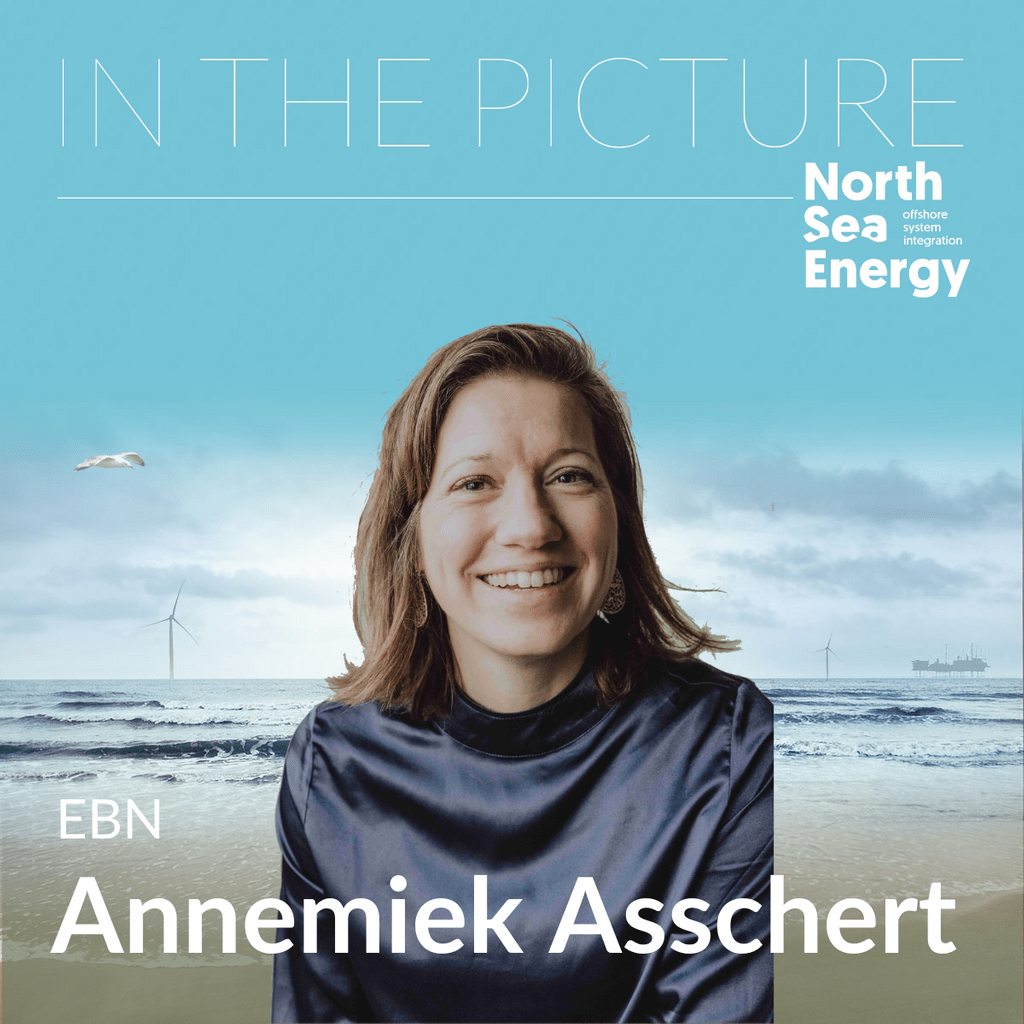Partner in the Picture – Annemiek Asschert – EBN
August 12, 2024
Looking at transitions from various perspectives (Annemiek Asschert - EBN)
EBN has been a partner in the North Sea Energy program ever since the start. We interviewed Annemiek Asschert, Manager New Energies & Innovation, to reflect on the emerging energy transition offshore.
- Can you describe the origins of EBN?
“EBN was established 50 years ago to invest in oil and gas projects on behalf of the Dutch State. Today, our activities focus on three key areas: the gas transition, the heat transition, and carbon capture and storage (CCS) and transport systems. Like the world around us, we are changing too. But one thing will never change: we will continue to represent public interests in the energy supply, now and in the years to come.“
- Annemiek, what is your role in EBN?
“As Manager New Energies & Innovation I am responsible for business development of New Energies and Innovation projects, onshore and offshore, which also includes re-use of existing mining locations and infrastructure for the energy transition and development of Underground Hydrogen Storage. I am also the main point of contact for the NSE program, but there are several people from different parts of EBN that contribute to several work packages in the program.”
- What is EBN’s role in the NSE program?
“EBN is participant in the North Sea Energy program since the start of the program. As a non-operating state participant, we have gained a lot of experience and knowledge of the existing offshore energy system. We are working towards a sustainable offshore system. We are transitioning from an oil and gas-based system towards wind, hydrogen, and other forms of sustainable energy offshore. During the transition time however, all these different forms of energy, need to exist next to each other. To optimize this system EBN contributes from several perspectives. What functions do we see, where at the North Sea, i.e., hydrocarbon prospectivity, CCS possibilities and Underground Hydrogen Storage (UHS), and what timelines do we foresee for all these different functions?”
- EBN's role has changed over time, from mainly O&G to other / broader energy system activities. In what ways does participating in NSE help you to achieve your ambition to ‘energize the energy transition’ as your website states?
“The NSE program emphasizes the necessity to look at the offshore energy system from a broad perspective. There are many stakeholders active at the North Sea, therefore it is difficult to oversee the whole picture. I think the NSE program does a very good job in painting the entire offshore picture and shows that not only the end goal should be the focus, but focus should also be on the transition period itself, besides that, the NSE program facilitates cooperation between all different partners in the project.”
- We have seen the dialogue on energy transition emerge over the last 10 years. What do you think really helped change it to where we are today? Do you see differences between NL an EU or neighboring countries and what can we learn from other countries?
“The fact that these dialogues emerged is step one in the process to create awareness and be able to take the next step in the energy transition. The increasing awareness of the fact that we need to change started the activities on changing the energy system. We do not know what the end picture will look like, but we need to be ready and prepare for different scenarios. For example, to balance the energy system, different models foresee the necessity of Underground Hydrogen Storage (UHS), therefore EBN is participating in projects and initiating several projects on UHS to increase the TRL of UHS to be ready in a decade for large scale Underground Hydrogen storage. These are national and international (EU)projects. EU countries approach the implementation of new technologies in different ways, we can learn from each other, for example on the implementation challenges. Cooperation is key between the different EU countries, to keep the steep learning curve and learn from each other.”
- EBN works on energy projects both off- and onshore, can you reflect a bit on the main differences between these projects? What can offshore projects learn from onshore energy transition projects?
“There are several differences between offshore and onshore projects: location and environment, infrastructure and accessibility, energy potential and efficiency, cost and investment, regulatory and permitting. A main difference is the stakeholders involved in the projects. For example, with onshore projects community engagement is very important to get local support for the energy transition projects. On the other hand, offshore cooperation between the different stakeholders concerning spatial planning and different functions that can exist next to each other is an important conversation to have. Offshore projects can learn or benefit from onshore innovations. Onshore projects have driven many innovations in renewable energy technology, such as more efficient turbines and grid integration solutions. Offshore projects can leverage these technological advancements and adapt them for offshore use, also in development of large-scale green hydrogen production. Lessons learned from the operation and maintenance of onshore projects (i.e., also pilot projects before moving offshore) can be applied to improve the efficiency and reliability of offshore projects, particularly in terms of predictive maintenance and remote monitoring.”
To enhance the participatory process, we interview NSE participants, representatives from politics, policy and administration, and stakeholders from the sector to share their vision on the role of the North Sea in the energy transition and the opportunities and challenges they see for system integration.
